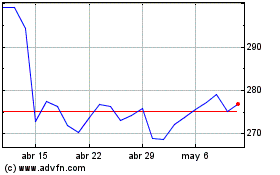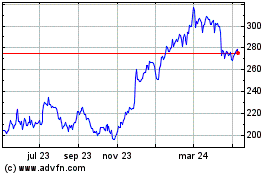By Marc Benioff
I first met Steve Jobs in 1984 when Apple Inc. hired me as a
summer intern.
The fact that I'd landed this gig in the first place was
something of a fluke; as a college student at the University of
Southern California, I'd reached out to the company's Macintosh
team to complain about a bug in its software and somehow parlayed
that conversation into a job. While I'd done my best to impersonate
a seasoned developer, at 19 years old, the sum total of my
programming experience was writing a dozen arcade and adventure
games in high school. Working at Apple was the big leagues, and
while I felt profoundly underqualified, nobody tossed me out the
door that summer. In fact, every time Steve Jobs passed my cubicle,
I somehow summoned the nerve to strike up a conversation.
It wasn't much, but through those small interactions, a bond
would eventually form. Steve and I shared a love for technology and
science as well as a passion for meditation and Eastern philosophy.
In addition to being a brilliant executive and peerless innovator,
he was a spiritual, intuitive person who had a gift for seeing the
world through many perspectives at once. I saw that he had a
willingness to share his wisdom, and I wasn't afraid to ask for
it.
Even once my internship ended, we stayed in touch, and as my
career progressed he became a mentor of sorts. Which is why, one
memorable day in 2003, I found myself pacing anxiously in the
reception area of Apple's headquarters.
By then, I was CEO of Salesforce, one of the first companies to
deliver enterprise software to customers as a subscription over the
internet. In the four years since Salesforce opened for business,
we'd hired 400 employees, generated more than $50 million in annual
revenue, and were laying the groundwork for an IPO the following
year. We were justifiably proud of our progress, but I'd learned
enough about the technology business to know that pride is a
dangerous state of mind.
Truth be told, I was feeling stuck. To catapult the company into
the next phase of growth, we needed to make a bold move. We'd
survived the scary startup phase where so many companies crash and
burn, but I was struggling to imagine how I'd navigate the pressure
of running a public company that has to lay itself bare to Wall
Street every quarter.
Sometimes seeking guidance from mentors is the only sure way to
survive these bouts of inertia. That is why I decided to make a
pilgrimage to Cupertino, Calif.
As Steve's staff ushered me into Apple's boardroom that day, I
felt a rush of excitement coursing through my jangling nerves. In
that moment, I remembered what it had felt like to be an
inexperienced intern mustering up the courage to say a few words to
the big boss. After several minutes, Steve charged in, predictably
dressed in his standard attire of jeans and a black mock
turtleneck. I hadn't settled on precisely what I wanted to ask him,
but I knew I'd better cut to the chase. He was a busy man, and was
legendary for his directness, and ability to quickly zero in on
what's important.
So I showed him a demo of the Salesforce customer relationship
management service on my laptop and, true to form, he immediately
had some thoughts. After unleashing a torrent of rapid-fire
suggestions on our software's basic functionality, down to the
shape and color of its navigation tabs, Steve sat back, folded his
hands together, and got to the larger point. Salesforce had created
a "fantastic enterprise website, " he told me. But both he and I
knew that that alone wasn't enough.
"Marc," he said. "If you want to be a great CEO, be mindful and
project the future."
I nodded, perhaps a bit disappointed. He'd given me similar
advice before, but he wasn't finished.
Steve then told me we needed to land a big account, and to grow
"10 times in 24 months or you'll be dead." I gulped. Then he said
something less alarming, but more puzzling: We needed an
"application ecosystem."
I understood that to hit the big leagues, we needed a huge
marquee customer win. But what would a Salesforce "application
ecosystem" look like? Steve told me that was up to me to figure
out.
We tripled in size over the next three years, topping $300
million in revenue, but the puzzle posed by Steve remained
unresolved. The more innovative products and features we released,
the more our customers expected from us. Privately, I started to
worry about whether we could cope with the pressures of scaling
up.
In previous eras, a company in our position would have tapped
its most brilliant scientists and squirreled them away behind a
triple-bolted door with top secret painted on it. These appointed
geniuses would have spent long days in isolation, wrenching
together prototypes and puzzling over clay models, walled off from
any ambient noise.
At the end of the process, these scientists would emerge from
their lairs, likely over caffeinated and unkempt, and would wheel
out a gurney containing some new product, the likes of which nobody
had ever seen. Then it was up to customers to determine whether it
was a game changer. Too often, it wasn't.
We had subscribed to this outdated model too, in the early years
of the company. Then, in 2006, the approach to innovation at
Salesforce started to change. To innovate on a truly massive scale,
we realized that we couldn't simply demand more of our already
overworked engineering department. The only possible way to scale
up our innovation efforts was to start recruiting outsiders.
One evening, over dinner in San Francisco, I was struck by an
irresistibly simple idea. What if any developer from anywhere in
the world could create their own application for the Salesforce
platform? And what if we offered to store these apps in an online
directory that allowed any Salesforce user to download them? I
wouldn't say this idea felt entirely comfortable. I'd grown up with
the old view of innovation as something that should happen within
the four walls of our offices. Opening our products to outside
tinkering was akin to giving our intellectual property away. Yet,
at that moment, I knew in my gut that if Salesforce was to become
the new kind of company I wanted it to be, we would need to seek
innovation everywhere.
So I sketched out my idea on a restaurant napkin. And the very
next morning, I went to our legal team and asked them to register
the domain for "AppStore.com" and buy the trademark for "App
Store."
Shortly thereafter, I learned that our customers didn't like the
name "App Store." In fact, they hated it. So I reluctantly conceded
and about a year later, we introduced "AppExchange": the first
business software marketplace of its kind.
These decisions gained added relevance when I returned to
Apple's Cupertino headquarters in 2008 to watch Steve unveil the
company's next great innovation engine: the sprawling, boundaryless
digital hub where millions of customers, developers, and partners
could create their own applications to run on Apple devices. Steve
was a master showman, and this presentation didn't disappoint. At
the climactic moment, he said five words that nearly floored me: "I
give you App Store!"
All of my executives gasped. When I'd met with Steve Jobs in
2003, I already knew he was playing a hundred chess moves ahead of
me. None of us could believe that Steve had landed on the same name
I'd originally proposed for our business software exchange.
For me, it was exciting and humbling. And Steve had unwittingly
given me an incredible opportunity to repay him for the prescient
advice he'd given me five years earlier. After the presentation, I
pulled him aside and told him we owned the domain and trademark for
"App Store" and that we would be happy and honored to sign over the
rights to him for free.
Steve helped me understand that no great innovation in business
ever happens in a vacuum. They're all built on the backs of
hundreds of smaller breakthroughs and insights -- which can come
from literally anywhere. AppExchange now has more than 5,000 apps,
ranging from sales engagement and project management tools to
collaboration aids.
Building an ecosystem is about acknowledging that the next
game-changing innovation may come from a brilliant technologist and
mentor based in Silicon Valley, or it may come from a novice
programmer based halfway around the world. A company seeking to
achieve true scale needs to seek innovation beyond its own four
walls and tap into the entire universe of knowledge and creativity
out there.
From "Trailblazer: The Power of Business as the Greatest
Platform for Change" by Marc Benioff and Monica Langley, to be
published on Oct. 15 in the U.S. by Currency, an imprint of Random
House, a division of Penguin Random House LLC, and in the U.K by
Simon & Schuster UK Ltd. Copyright (c) 2019 by Salesforce.com,
Inc. Mr. Benioff is the chairman and co-chief executive officer of
Salesforce.com.
(END) Dow Jones Newswires
October 11, 2019 08:14 ET (12:14 GMT)
Copyright (c) 2019 Dow Jones & Company, Inc.
Salesforce (NYSE:CRM)
Gráfica de Acción Histórica
De Mar 2024 a Abr 2024

Salesforce (NYSE:CRM)
Gráfica de Acción Histórica
De Abr 2023 a Abr 2024
